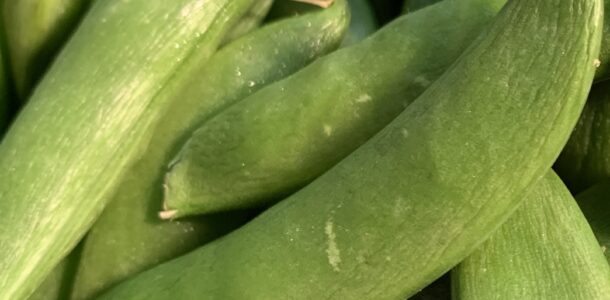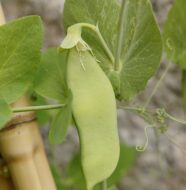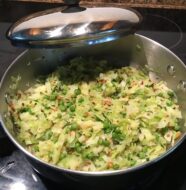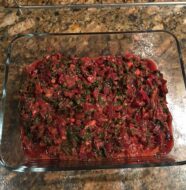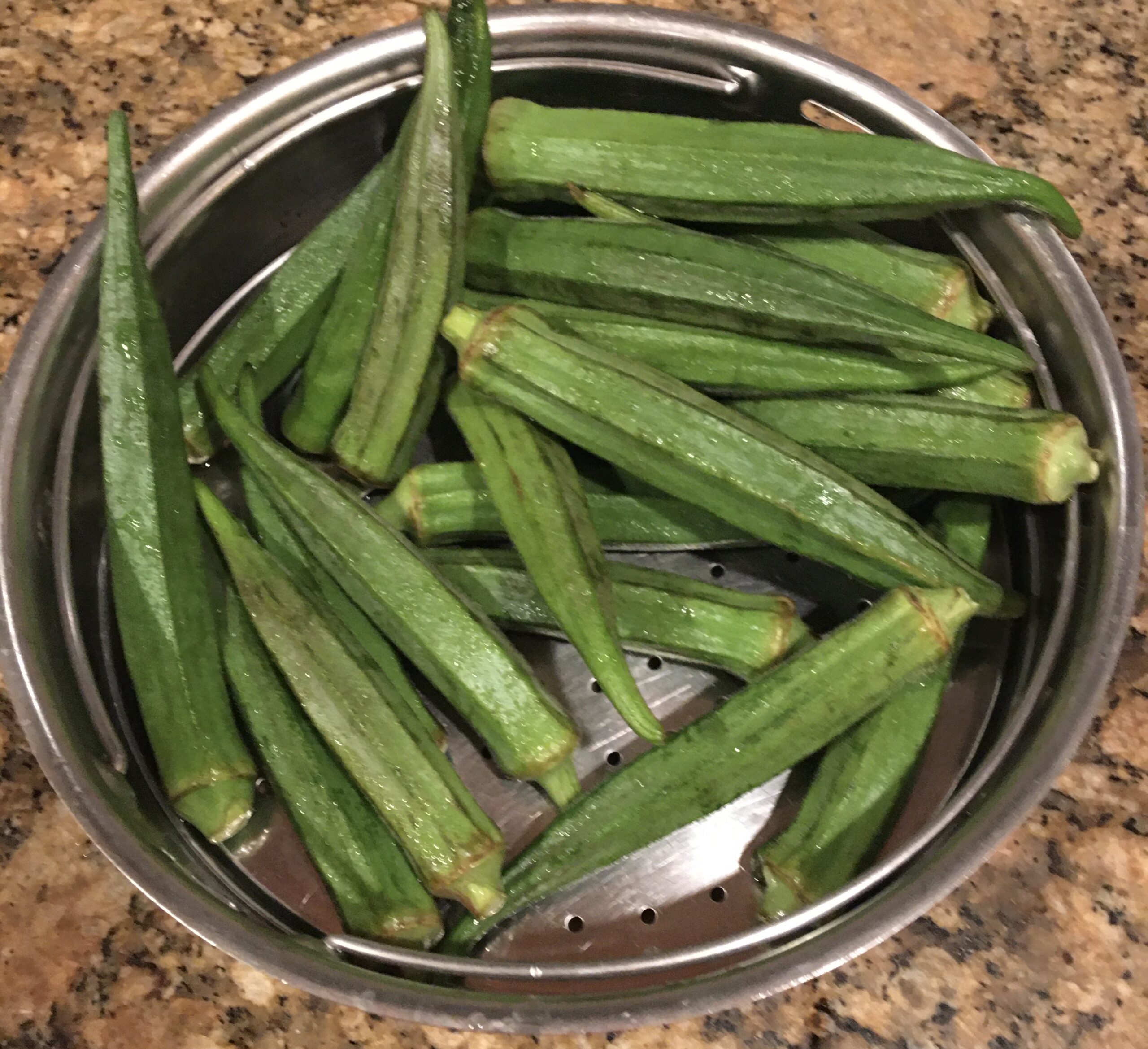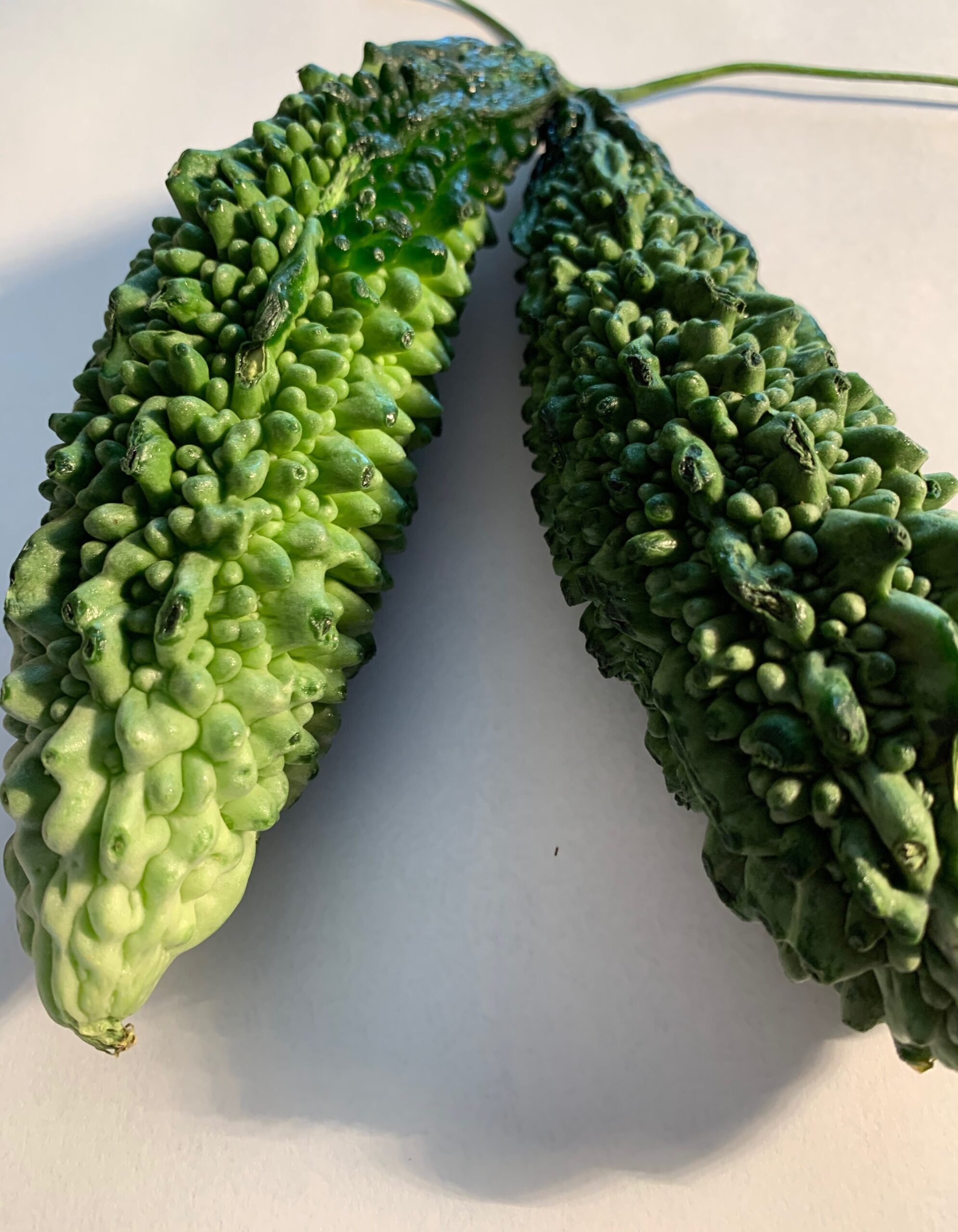Green peas with a scientific name Pisum Sativum, also known as English peas or French Petits Pois, are an ancient vegetable originating in the Himalayan plains of India. They grow during Spring & Fall. Peas form a part of legumes – plant species with seed pods, that split along both sides when ripe. They are close cousins of black beans, lentils,
Peas can be cooked alone or combined with a variety of vegetables like cabbage, carrots, cauliflower, corn, mushrooms, potatoes, or spinach and cottage cheese.
Buying and storage: Choose peas that have bright green pods without any blemish. The peas inside should be glossy, crunchy, and sweet. It is good to buy them as fresh as possible, as they begin their sugar to starch conversion soon after picking. Peas can be refrigerated in a plastic bag for 2-3 days. Both canned and frozen varieties of peas are available year-round; equally nutritious and convenient to use.
History: Peas are one of the eight so-called “founder crops” and domesticated in the Fertile crescent 11000 years ago. The earliest human consumption of wild peas was at least 23000 years ago and perhaps by our Neanderthal cousins 46000 years ago. There are three modern species of peas very complex genetically and their domestication process is yet to be figured out.
https://www.thoughtco.com/domestication-history-of-peas-169376
Story
During our visit to Guatemala to celebrate my daughter’s 40th birthday in 2009. a request was made by my son in law’s aunt (a professor at the local university & an archeologist) to eat Indian food. My husband walked around town and found an Indian restaurant run by a couple – a Guatemalan native and his wife from Kashmir India. The Kashmiri chef cooked this gourmet dish for dinner along with Kashmiri Naans which was delicious and enjoyed by all.
Green Peas Dishes
Peas with Cottage Cheese (Paneer Matar)
Peas in Gravy (Matar Shufta)
Yellow peas gravy (Matar Ragda)
Peas & Potato triangular pockets (Aloo matar Samosa)
Peas Pastry ( Matar Kachori)
Peas Bird Nests (Matar Chidiya ghar )
Nutrition Facts of Green Peas (Pisum sativum)100g raw %DV
| GI =22 GL=6 Water =77.9 g |
Minerals | Vitamins |
| Energy 81 cal – 4% | Sodium 5mg <1% | Folates 65 mug- 16% |
| Carb. 14.45g – 11 % | Potassium 244mg -5% | Niacin 2.09mg – 13% |
| Protein 5.42 g – 10% | Calcium 25mg – 2.5% | Pantothenic acid 0.104mg – 2% |
| Total Fat 0.4g – 2% | Copper 0.176mg – 20% | Pyridoxine 0.169mg – 13% |
| Cholesterol 0mg -0% | Iron 1.47 mg – 18% | Riboflavin 0.132mg – 10% |
| Dietary Fiber 5.1 g – 13% | Magnesium 33 mg – 8% | Thiamin 0.266 mg – 22% |
| Carotene Beta 449 mug | Manganese 0.41mg – 18% | Vitamin A 765 IU – 25.5 % |
| Lutein zeaxanthin 2477 mug | Selenium 1.8 mug – 3 % | Vitamin C 40mg – 67% |
| Zinc 1.24 mg -11 % | Vitamin E 0.13mg – 1% | |
| Vitamin K 24.8mug – 21% |
Health Benefits of Peas
- Garden peas are rich in
phytonutrients ,antioxidants, minerals, & vitamins; they are excellent all-around food, maintain healthy skin & eyesight: with Vitamin A (25.5% RDA) Peas contain phytosterol that helps reduce cholesterol levels. - Improve
digestive health: Peas are a good source of soluble and insoluble fiber. The high fiber content present in peas helps to maintain good digestive health. Fiber adds bulk to the stool thereby enhancing smoother bowel regularity. Including them in salads, soups, stews, and curry is very beneficial to health Good source of iron: Peas are a good source of iron. Iron deficiency causes anemia. Lack of iron means the body can’t make enough oxygen-carrying red blood cells for thereby causing hemoglobin deficiency. Iron helps combat fatigue and gives strength.- Peas are an
excellent source of Folic acid that prevents neural tube defects in newborns. Peasare also the richest food source of Vitamin B1, Niacin, Thiamin. - Build Immunity: Peas are rich in Vitamin C to make it one of the best immunity building foods. A single serving of peas supplies half the RDA. of vitamin C. Peas(esp.pea shoots) contain phytoalexins that can inhibit H.Pylori the bacterium that causes stomach ulcers and stomach cancer.
- Glycemic control: Peas contain a healthy amount of
fiber, may improve glycemic response compared to low fiber foods in a study of yellow pea flour and white flour. - Peas contain vitamin K( 21%RDA) that helps build bone mass. Vitamin K-1 may cure Alzheimer’s patients and limit neuronal damage to the
brain .
Spice & Herb Powers
- Turmeric powder: Cognitive disease prevention most effective in preventing mental disorders from taking place. Curcumin reduces the effects of free radicals on the nervous system.
- Coriander powder: Coriander has incredibly high amounts of dodecanal which is a compound twice as effective as the antibiotic used to treat salmonella. Including it in the daily diet will help keep away from this deadly bacterium.
- Cumin powder: Cumin helps treat anemia being rich in iron 100 g has 66mg of iron. Cumin is also a good source of energy to combat fatigue & relieve its symptoms.
- Red chili powder: Capsaicin in it has the power to kill leukemia cancer cells and inhibit tumor growth and cancer according to the American Association for Cancer research. Medical News today has cited that capsaicin might have the ability to stop breast cancer.
- Curry powder( Tava Fry masala): may prevent cancer: the variety of antioxidants, vitamins & minerals in its composition are effective in fighting disease – cancer cells.
- Ginger: Anti-inflammatory like its cousin turmeric especially with osteoarthritis. It suppresses inflammatory processes during and after consumption. Ginger has an effect similar to ibuprofen without the stomach irritant.
- Garlic: helps control blood pressure. garlic supplementation (1g)/ day in the form of capsules was found to bring about a reduction in blood pressure levels due to the presence of polysulphides that have a vasodilatory action on blood vessels widening them and lowering wall tension.
- Cilantro leaves: helps reduce cholesterol levels since it contains linoleum, palmitic and stearic acids which have the ability to reduce blood cholesterol levels. They also help prevent the accumulation of fatty acids in blood vessels to prevent atherosclerosis. The presence of vitamin C also reduces the oxidation of cholesterol on the blood vessel wall which makes plaques resistant to removal. C
ilantro can help to boost levels of good cholesterol, (HDL) helping keep a good ratio.
Method to make peas with cottage cheese (Paneer Matar)
- To make masala: blanch tomatoes, peel skin (keep aside); peel and chop the onion, ginger, and garlic. Grind onions, ginger, garlic, and tomatoes in a blender. (5 min.)
- Heat oil in a frying pan; add ground masala, spices, and sauté.(3 min.)
- Add frozen peas, salt, and 2 cups water to cook until tender. (4 min.)
- Add fried paneer pieces and let the sauce simmer until thick. (2 min.)
- Remove from heat and garnish with washed and chopped cilantro leaves.
Serve Matar Paneer with Quinoa, Rice Pilaf , Bread Rolls, Pasta, Pooris or Naans.
TIPS
Creamy embellishment: Grinds a few pre soaked almonds / cashewnuts and mix with the sauce for a creamy texture.
Make ahead fresh Paneer: heat 4 cups milk +1 tbsp. citric acid or 2 tbsp. lemon juice in the microwave for 10 min(two 5 min. intervals); the milk would split; use a strainer / cheese cloth to filter; lay the cottage cheese flat on a surface ( wrapped in cheese cloth) press between two weights ; if using strainer, use coffee filter paper to dry the moisture from cheese
Paneer can be stored in the freezer for 2-4 weeks.
Time saver Substitute ginger and garlic with powders and use frozen onions.
Variation: Substitute cottage cheese with Tofu cubes (Soy bean curd) for Vegans

